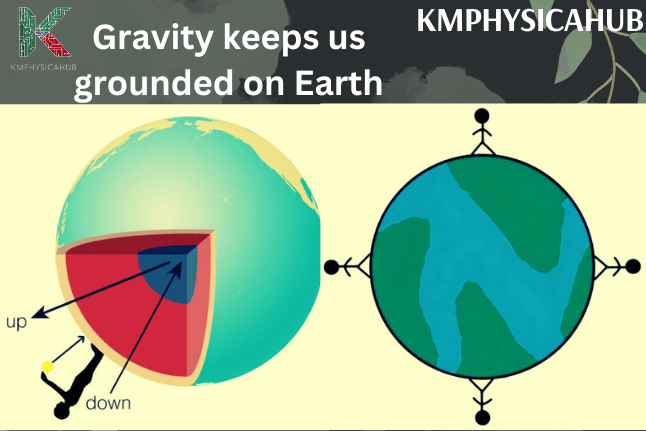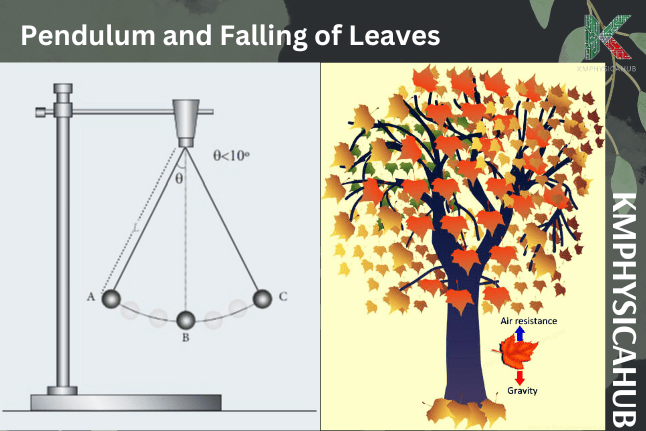Impact of the Unseen Force on Humans, Sports and Physical World
Picture a situation when you wake up one morning, and instead of moving on the floor, you were flying around the room. It does sound like a movie plot from a science fiction film, does it not? This fun situation raises awareness about the role of gravity in our daily lives.

Introduction: The Unseen Force
It is the force that pulls two objects towards each other; the force that pulls planets toward the sun; the force that confines us to the earth, and is involved in several other natural occurrences that we see and feel often. It is like a spider web connecting every particle in the universe including minute particles of dust and huge galaxies.

Gravity and the Human Body
When it comes to the effects of gravity, possibly the most apparent and easy to notice is its relation to our movements and posture. Things as simple as standing, walking or running, up to even the simplest act of sitting down are considered to be upheld by our body mass against the force of gravity. It is a force that works against our musculoskeletal systems, hence gives support and equilibrium.
- Physiological Adaptations: Human bodies are designed to be functioning in conditions of the terrestrial gravity. From the position of our spinal cords to the density of the muscles in our legs, we are created to move and perform in presence of gravity.

- Health Implications: It is essential in blood circulation, bone mass, and muscle strength and it helps drive blood to different parts of our body, especially our legs.
- The Challenges of Space Travel: Astronauts experience remarkable changes within their bodies when they are in space where weightlessness is a normal occurrence. Their bones become lighter, muscles become less strong, and even their hearts and the rest of cardiovascular system change to suit the new conditions. In some ways, it seems like their bodies have never known any other state and are now struggling to adjust to the new atmosphere of being weightless.

Role of Gravity in Sports
In sports, ‘gravity’ has significant influence in how games are administered and perceived. Whether it is the throw of a basketball, the pass of a football or soccer ball, or the flight of a gymnast, knowing which way is up and how to use or counteract gravity will improve performance. In this context, it is common for athletes to train their movements in synchrony with the forces of gravity and strive for improved performance in their chosen activities.
Role of Gravity in Our Physical World
- Keeping Us Grounded: Gravity is the force that makes us stay firmly on the ground, and enables us to go for a walk, run or even jump. it also affects our weight and balance and the ways by which we move about in our day to day experiences and activities.

- Shaping the Earth: Gravity also plays a crucial role in the formation of earth, the existence of atmosphere around the earth, and the formation of tides in the ocean. It is also involved in the formation of the ground we stand on because it squeezes all the layers of the Earth to form the crust.
- Beyond Our Planet: Not only our lives are controlled by gravity – it is responsible for the movements of various celestial bodies across the whole universe. This is what keeps the Moon orbiting the Earth, the Earth around the Sun and it is what holds together the spinning galaxies in space.

Role of Gravity as an Inspiration
- Scientific Breakthroughs: The discovery of gravity has always opened immense understanding that brought tremendous discovery and innovation. Ranging from Newton’s laws of motion to albert Einstein’s general theory of relativity, gravity has fuelled scientific development. Learning more about this force is like peeling layers off an onion to discover more about the fundamentals of existence.
- Art and Literature: This force has also invaded the sphere of art and literature as well. In Salvador Dalí’s painting, people can see the landscapes where objects and figures seem to levitate; in Jules Verne’s novels one can find such stories as “Twenty Thousand Leagues Under the Sea” where people and objects are weightless. Thus, gravity always remained an inspiration for artists and writers.
Beyond Everyday: Exploring the Frontiers of Gravity
- Mysteries of the Universe: When we go towards the far corners of the universe, some entities and events make us rethink about gravity. Cosmic objects like black holes, dark matter, and gravitational waves are simply some of the works beyond the observable human spectrum. By studying these phenomena,, we expect to discover something new about the universe and people’s place in it.
- The Quest for Artificial Gravity: The future in space missions still presents various difficulties, and one of these is how to establish artificial gravity for the eventual interstellar space traveling. To prevent astronauts’ loss of body mass and deterioration in health, researchers are designing technologies to artificially create weight and gravity.

Daily Life Examples of Gravity in Action
Here are some surprising and fascinating examples of gravity in action in our everyday lives:
- Raindrops and Snowflakes: The subject of raindrops and snowflakes are greatly affected by the force of gravity especially its form and direction. When water molecules are in the atmosphere they gather together and gravity plays its part to bring them downwards in the form of a drop which has the shape of a tear drop. Likewise, the various designs of snow-flakes are created as water vapor solidifies and—by virtue of gravity—undergoes a change.
- Siphoning: Siphoning is the act of moving water from one vessel to another and this entirely relies on the force of gravity. Height difference makes it possible for the liquid in the first container to be forced to the second container, against the gravitational force.

- Roller Coasters: The force of gravity is responsible to control the up and down movements of the roller coaster. As the cars move up, the gravitational force is converted into potential energy. And when the car descends this potential energy is converted to kinetic energy to give the feeling of weightlessness.
- Pendulum Clocks: The to and fro motion of a grandfather clock is as a result of the gravitational force. Through the swinging of the pendulum, the mechanical functioning of a clock is managed, here we get to understand how gravity can be useful.

- Falling Leaves: Movement of leaves as they fall – with that beautiful spiral movement – is determined by gravity and drag forces. As autumn progresses and the leaves begin to fall, the air moving over them established pressure differential to make them spin and twirl gracefully.
- Tides: The usual fluctuation of ocean tides is due to the forces exerted by the moon and comparatively by the sun on the earth. This force affects the water in such a way that it swells, thus giving the high and low tide levels noticed along the shorelines.
- Gravity Assist: In space mission, spacecrafts can take advantage of the gravity pull of a planet in order to increase in velocity or alter direction and this is referred to as gravity assist or slingshot. This has the advantage of making interplanetary travel faster and less costly.
- That Feeling in an Elevator: You know that sensation when you’re in an elevator and you feel either lighter than a feather or as if you weigh a ton? That is the work of gravity! When the elevator is accelerating up you ‘weigh’ more; there is slightly more gravitational force exerted on you. Downward acceleration on the other hand gives you the feeling of weighing less.

Captivating Mysteries of Gravity
Gravity may seem straightforward, but it holds mysteries that always fascinate scientists. Here are a few captivating secrets about this fundamental force:
- The Mystery of Gravity’s Weakness: It was also stated above that gravity force is incredibly feeble as compared to any of the other fundamental forces that exist in nature, including electromagnetism, the strong force and the weak force. Scientists including physicists have not been able to offer a conclusive why gravity is much weaker. Some theories postulate that there are other dimensions that are hidden from our experience, to which gravity may be “leaking” into.
- The Elusive Graviton: Like the other fundamental forces, other particles exist with which it is associated, such as photon being related to electromagnetism, but no one has seen the particle, the graviton that is responsible for gravity. Even to find one graviton would be a dream for physics!
- Gravity’s Influence on Time: This one will knock you right out of your boots! In general relativity theory by Albert Einstein, gravity is described as a force that warps the space and time. The larger the gravitational field, the amount of time taken decreases. Because gravity is stronger near the surface, time actually goes a tiny bit slower at sea level than it does on an isolated mountaintop. While the difference is small, it has real-world implications for technologies like GPS satellites, which need to make these tiny adjustments to work properly.
Conclusion: A Force to Appreciate
Therefore, gravity is not just another physical force but the foundation of the universe, Earth, and human experiences. It ranges from macro astronomical to the micro mechanical aspects of day to day life. All in all, it is impossible to overstate the significance of gravity – this universal force defines our existence on multiple levels: physical, scientific, and artful. So, the next time you stand on the ground or observe the heavens above, count your blessings for that force exists in all of us.
FAQs
Q1. What is gravity?
A: Gravity is the force which can be defined as the ability of two bodies to attract each other or pull each other with the help of force which depends upon their masses and distance.
Q2. How does gravity affect our daily movements?
A: Gravity impacts our daily movements by requiring our bodies to exert effort to perform actions like standing, walking, or lifting objects.
Q3. In what ways does gravity influence engineering?
A: Gravity influences engineering by requiring structural calculations for buildings, designing roller coasters, and ensuring safe flight paths in aviation.
Q4. Give an example of a natural phenomenon influenced by gravity?
A: Gravitation has an impact on various natural occurrences like Ocean tides, primarily because of the moon pulling the earth through gravity.
Q5. Can gravity affect our health?
A: Yes, gravity helps maintain bone density and muscle strength. It also aids in blood circulation, ensuring efficient delivery to all body parts.
